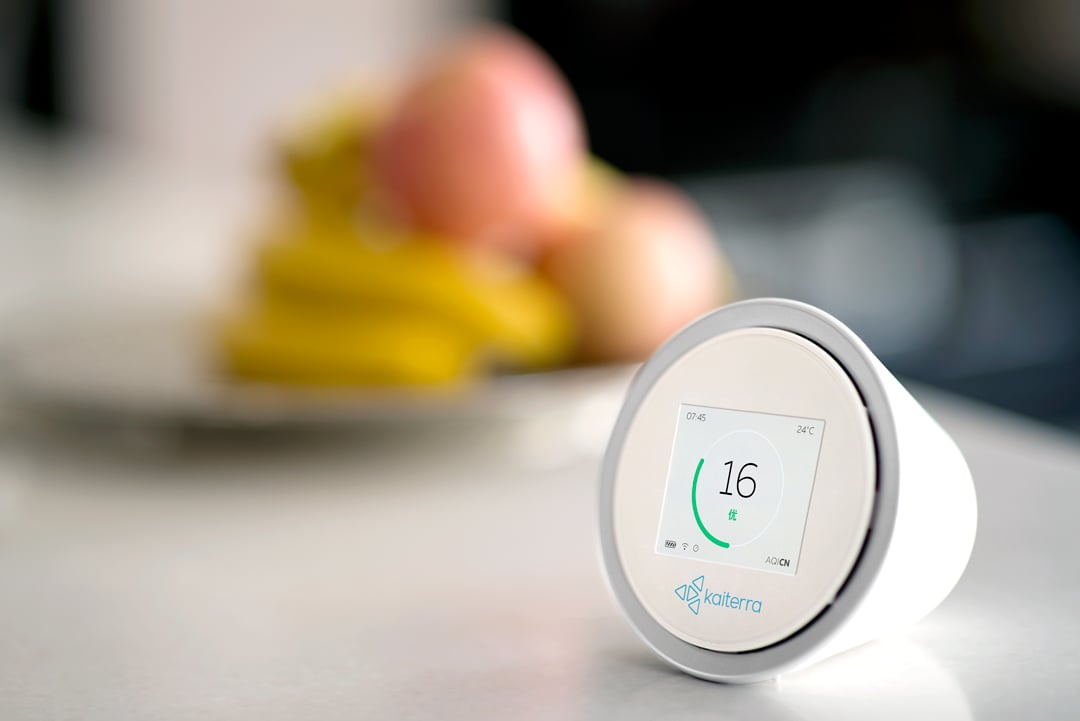Newsletter
Here’s a riddle for you: What is so small that you can only see it from far away?
The answer, of course, is the particulate matter that makes up Beijing smog (or any city’s smog…it’s all pretty small). From a distance, the haze may look dense and thick, but when you’re actually close enough to breathe it, suddenly it’s gone. You can’t make any fine measurements just by looking. It’s not like counting apples in a basket.
We’re forced to make assumptions about the air we’re breathing based on how hazy and grey it looks outdoors, how scratchy our throat feels, or what our phone app says, but we can’t observe particulate matter directly—It’s too small!
This can lead to some puzzling questions: I don’t see haze in the distance, does that mean what I’m breathing is fine? Is my purifier making a difference? Should I open my window while I’m cooking? You can’t tell just by squinting really hard and counting the specks.
To get a good look at the stuff we breathe, we need to enlist the help of machines. Science has a number of very clever ways to detect what’s in the air, but what makes sense in a lab might be impractical for your living room.
There are 3 main technologies that are used for counting particulate matter in the air, and they all operate on a similar principle. They send out a signal and then see what comes out on the other side, kind of like sonar, or playing Marco Polo.
How they achieve this (and how well it works) varies though, and that’s what we’ll discuss below. We’ll also tell you where you can expect to find them, in case you decide that you want to start your own air lab.
1) Infrared
Where to find it
Some air purifiers have an “air quality monitor” built in. These are almost always taking advantage of an infrared detector. Most of the more affordable household-grade particle detectors on the market use infrared as well.
How it works
The detector is a chamber with an air current going through it. On one side of the chamber, there is an infrared emitter (like a light bulb), and on the other side, there is an infrared sensor. Each particle in the air blocks a little bit of light, meaning that a little bit less of it will reach the sensor. In other words, the light gets dimmer.
Based on how bright the light is, an estimate can be made as to how many particles are in the air.
How good is it?
Just okay. The problem is that the sensor can’t tell what’s causing the light to dim. It could be 60 PM2.5 particles, 15 PM10 particles or 1 grain of rice, but your machine will give the same reading.
Infrared can be useful for a quick “good or bad” assessment, but infrared devices can’t be considered particle counters—if your machine gives you an exact number, it’s just guessing!
Note: There is such a thing as infrared gas monitoring, used in pipelines and refineries and stuff to detect leaks. It works a little differently, do not confuse!
2) Beta attenuation mass monitoring
Where to find it
Most famously, this is what the US Embassy in Beijing uses. They’re big and expensive (think tens of thousands of dollars) so they aren’t very common. They are mostly used for regular monitoring over long periods of time, and are appropriate for measuring ambient air. You probably don’t want (or need) this in your living room.
How it works
It’s complicated and cool! We’ll write a post in the future that goes into more detail about what’s actually going on in there, but for now let’s explain it this way:
First, an air sample is captured by simply running some air through a piece of clean filter paper. Now, all of the particulate matter is trapped in the paper, and we can take a closer look at it.
The paper (and the stuff trapped on it) is exposed to a burst of beta radiation. Some of the PM2.5 absorbs the radiation, and the differences on the other side are measured.
Then, some math is done to determine how the weakening of the beta rays (that’s what attenuation means!) translates into a mass of PM2.5.
How good is it?
Crazy good! The neat thing about beta radiation is that it can pass through solid matter. Infrared can only tell us whether or not the light was blocked but, beta attenuation measurements can tell us lots about the size and density of the stuff in the air.
Beta attenuation is affected by every little thing, like humidity and temperature, so it’s possible for results to be wildly inaccurate if there isn’t someone around to keep the unit calibrated properly. It’s very technical.
That said, if you have two units side-by-side, you will still get small variations in results. That’s simply because particles in air (especially PM10) aren’t necessarily uniformly dispersed.
So when the US Embassy says that AQI is 194, that means it’s 194 in that part of the room that the air sample was taken from. You could be across the hall but breathing 186 or 201, so don’t get too hung up on the number!
3) Laser diffraction
Where to find it
Professional handheld devices such as the Dylos or IQAir ParticleScan use laser diffraction to count particles and determine their size. This method works in lots of scientific settings, and you can use it in air, liquid or vacuum (the laser, that is— We don’t recommend putting your Dylos underwater).
How it works
When a laser beam strikes a particle, the beam’s light is scattered. Larger particles scatter the light more than smaller particles. A sensor detects the intensity and angle of the beam after passing through the particulate-laden air. Then, an algorithm determines how many particles were in the sample, and how big they were.
How good is it?
Very good. A well-calibrated unit placed beside a Beta Attenuation Monitor (see above) will produce very similar results. On top of that, you get a very fast response—A new reading every few seconds or so, which is enough for any home or office air quality monitoring job.
The trick is getting it calibrated properly. Soot will diffract light a little differently than sand will, for example, so the algorithm needs to be tweaked accordingly. There are two ways to do this: With older devices, a technician with books and books of data needs to tweak the device before measurements are taken. But in 2015, a “smart” particle detector can get all of this data from a central server and make the necessary tweaks automatically.
Does such a device exist? I’ll just leave this here.






.png?width=200&height=148&name=Menu%20C%20(2).png)

.png?width=307&height=228&name=Menu%20-%20D%20(1).png)
.png)





